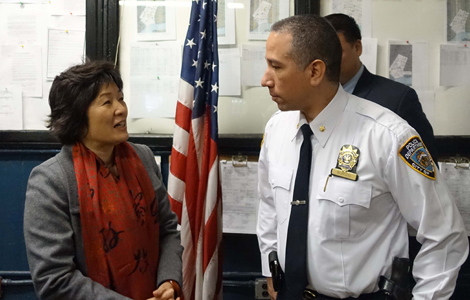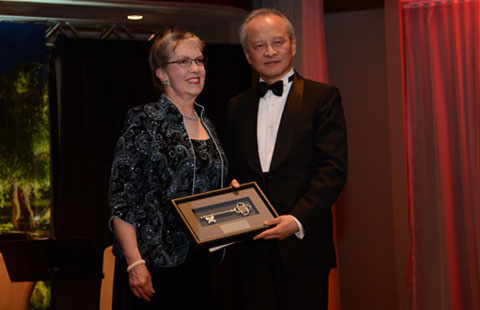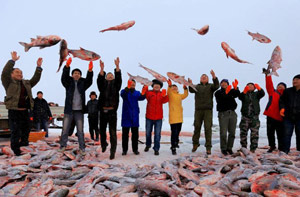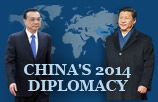PLA participation in RIMPAC a milestone
Updated: 2014-06-27 07:24
By Chen Weihua(China Daily)
|
||||||||
 The 2014 Rim of the Pacific, or RIMPAC, naval exercises began in and around the Hawaii Islands on Thursday. They are a milestone in US-China relations, especially their military-to-military ties, as it is the first time the Chinese navy was invited to participate in the drills, which involve 22 nations, 47 ships, six submarines, more than 200 aircraft and 25,000 personnel.
The 2014 Rim of the Pacific, or RIMPAC, naval exercises began in and around the Hawaii Islands on Thursday. They are a milestone in US-China relations, especially their military-to-military ties, as it is the first time the Chinese navy was invited to participate in the drills, which involve 22 nations, 47 ships, six submarines, more than 200 aircraft and 25,000 personnel.
Four Chinese naval vessels, including the missile destroyer Haikou, the missile frigate Yueyang, the supply ship Qiandaohu, the hospital ship Peace Ark, and a total of 1,100 officers and sailors make the Chinese navy's participation the second-largest after that of the host nation, the United States.
The Chinese People's Liberation Army Navy is participating in seven programs, including artillery practice, sea security operations and military medical exchanges between the Peace Ark and US Navy hospital ship Mercy.
The invitation, first extended by former US defense secretary Leon Panetta in September 2012, was significant because China has been excluded from earlier exercises, including the previous one in 2012 when most countries around China participated.
The exclusion of China undoubtedly increased Chinese suspicions that RIMPAC was targeting China, but the inclusion of the PLA Navy this time can help dispel such doubts.
A few weeks ago, many people were holding their breath, as it looked like the PLA Navy might cancel its participation due to the indictment of five PLA officers by the US Justice Department for the alleged cyber theft of US corporate secrets. Because military-to-military exchanges between China and the US have been damaged previously by incidents such as US arms sales to Taiwan, the NATO bombing of the Chinese embassy in Belgrade in 1999 and the collision of a US EP-3 spy plane with a Chinese fighter jet in 2001, such worries were justified. However, both sides have learned that they should not let such incidents to spill over and damage their overall relations. This is indeed a sign of maturity in handling their complex and consequential relationship.
Both countries have accused the other of being reluctant to conduct military exchanges, but this just shows that both are eager for more exchanges. And I have heard that Chinese and American sailors have got on well on previous occasions, not only during the drills, but also in the after-drill basketball games or farewell parties, when there is a lot of ganbei-ing.

 Music at her fingers
Music at her fingers
 Across America Over the Week (Jan 16 - Jan 22)
Across America Over the Week (Jan 16 - Jan 22)
 Spend Chinese New Year in style
Spend Chinese New Year in style
 Ili river valley becomes a popular destination for swans
Ili river valley becomes a popular destination for swans
 Philip Ma: from scientist to businessman
Philip Ma: from scientist to businessman
 Birmingham's Spotlight on China dinner
Birmingham's Spotlight on China dinner
 How to distinguish doucai, wucai, Famille-rose and enamel porcelain
How to distinguish doucai, wucai, Famille-rose and enamel porcelain
 Xinjiang lake in bumper fishing season
Xinjiang lake in bumper fishing season
Most Viewed
Editor's Picks

|

|

|

|

|

|
Today's Top News
Houston's SW Chinatown
China to focus on reforms, opening of capital market
Slowdown brings new risks to banks
Trade group calls for BIT
Market status for China is 'political' issue
Birmingham's Spotlight on China dinner
Bank takes renminbi-clearing seriously
Traditional Garb
US Weekly

|

|







